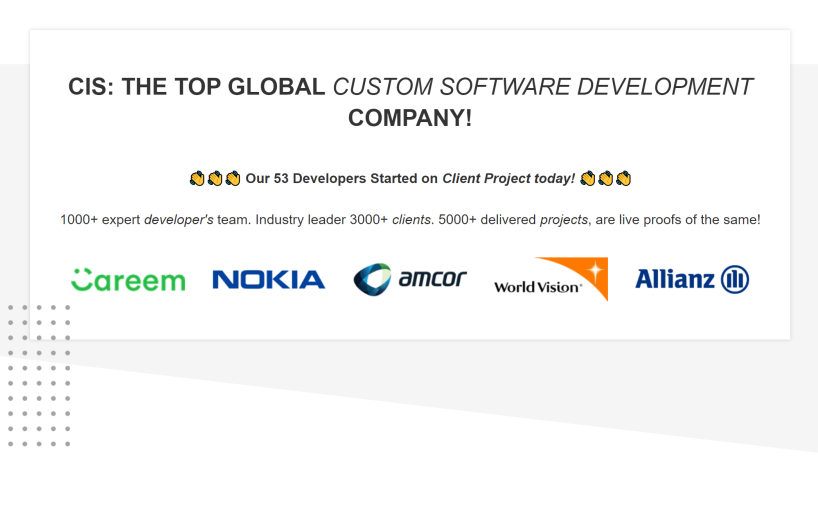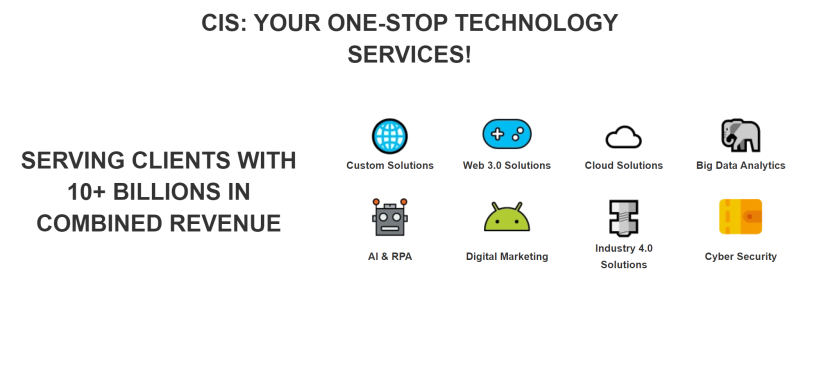Maximizing ROI: The Cost and Benefits of Adopting Sap Erp Integrations With Microsoft Dynamics for Your Business
- SAP ERP integrations with Microsoft Dynamics - Detailed Analysis by Enterprise Solutions Experts
Request A Free Consultation - Why Use SAP ERP Integrations With Microsoft Dynamics



Why Mid-size Companies and Enterprises needs SAP ERP Integrations With Microsoft Dynamics:
Mid-size companies and enterprises need SAP ERP integrations with Microsoft Dynamics because it allows them to combine the powerful features of both systems, creating a more efficient and streamlined business process. This integration can help reduce costs by streamlining processes such as accounting, inventory management, customer relationship management (CRM), supply chain management (SCM) and human resources (HR). It also helps improve data accuracy across multiple systems, allowing for better decision making. Furthermore, it can provide mid-size companies with access to enterprise level analytics that would otherwise be unavailable due to their limited resources.
Benefits of using SAP ERP Integrations With Microsoft Dynamics in Mid-size companies and Enterprises:
1. Streamlined Processes:
SAP ERP integrations with Microsoft Dynamics allow mid-size companies and enterprises to streamline their processes, eliminating manual data entry and reducing the number of errors. This helps to improve operational efficiency and accuracy in reporting.
2. Improved Collaboration:
By connecting disparate systems, SAP ERP integrations with Microsoft Dynamics help mid-size companies and enterprises collaborate more effectively across departments by providing a shared view of customer information, financials, inventory levels, supply chain management, etc., allowing for better decision making.
3. Cost Savings:
Integrating systems can greatly reduce costs associated with maintaining separate applications or manually entering data into multiple databases. Additionally, integrating existing legacy systems can save time and money on new system implementations or upgrades as it eliminates the need for custom coding or complex integration projects between different platforms.
4. Increased Visibility & Analytics:
The ability to access real-time business insights from a single source of truth enables mid-size companies and enterprises to gain visibility into operations that would otherwise be difficult to track without an integrated system in place-such as performance metrics related to customer service delivery times or product availability rates within specific regions or markets-which gives them the opportunity to make informed decisions quickly based on accurate data points rather than relying solely on intuition or guesswork..Detailed Features of SAP ERP Integrations With Microsoft Dynamics for Mid-size companies and Enterprises:
1. Seamless Integration:
SAP ERP and Microsoft Dynamics can be integrated seamlessly, allowing for a smooth transition between the two systems. This means that data can be shared easily across both platforms without any manual intervention or duplication of effort.
2. Automation:
With integration between SAP ERP and Microsoft Dynamics, companies can automate various processes such as order management, invoicing, inventory tracking and financial reporting. This reduces manual errors while increasing efficiency in operations.
3. Improved Visibility:
By integrating the two systems, companies gain greater visibility into their business operations since they have access to real-time data from both platforms at once. This enables them to make more informed decisions quickly based on accurate information rather than relying on outdated reports or guesses about what is happening in their business environment at any given time.
4. Enhanced Security:
Integrating SAP ERP with Microsoft Dynamics ensures that all data is secure within the system since it is stored centrally instead of being spread out across multiple locations which could potentially be vulnerable to security threats like hacking or malware attacks..
5 Cost Savings:
By eliminating redundant processes and automating tasks that were previously done manually, companies are able to save money by reducing labor costs associated with those activities as well as streamlining overall operations for increased efficiency and productivity gains over timeRequest A Quote - Why Use SAP ERP Integrations With Microsoft Dynamics
Who are the Users of SAP ERP Integrations With Microsoft Dynamics:
The customers using SAP ERP integrations with Microsoft Dynamics are typically large and medium-sized organizations across a variety of industries including manufacturing, retail, healthcare, government, financial services, and more.
How to ensure Data Security and Compliance with SAP ERP Integrations With Microsoft Dynamics:
1. Ensure that all data is encrypted and stored securely in the cloud, using secure protocols like SSL or TLS for transmission.
2. Leverage role-based access control (RBAC) to ensure only authorized personnel have access to sensitive data and functionality within the system.
3. Use multi-factor authentication (MFA) as an additional layer of security when accessing SAP ERP systems from Dynamics.
4. Establish a clear set of policies and procedures around data handling, storage, backup, archiving, logging etc., which should be regularly reviewed and updated to keep up with changing regulations and industry best practices related to compliance requirements such as GDPR or HIPAA/HITECH Act compliance standards.
5. Monitor user activity on the system regularly for any suspicious behavior that could indicate unauthorized access or misuse of information stored in SAP ERP systems integrated with Microsoft Dynamics applications
How SAP ERP Integrations With Microsoft Dynamics can increase organization Productivity, Agility, and Profitability:
SAP ERP integrations with Microsoft Dynamics can increase organization productivity, agility, and profitability by streamlining processes and allowing for more efficient data sharing between departments. This integration will enable organizations to quickly access and analyze real-time information from multiple systems in order to make informed decisions faster. It also provides a single platform for managing customer relationships, sales orders, financials, inventory management, supply chain operations and more. Additionally, it enables businesses to integrate their existing IT infrastructure with the latest cloud technologies such as Office 365 or Azure which can further enhance operational efficiency. Finally, this integration allows organizations to benefit from the scalability of both SAP ERP and Microsoft Dynamics which helps them meet changing business needs without having to invest in additional resources or hardware.
Request A Quote - Why Use SAP ERP Integrations With Microsoft Dynamics
How to Measure KPIs and increase Benefits of implementing SAP ERP Integrations With Microsoft Dynamics in Mid-size companies and Enterprises:
1. Track the Time Saved:
Implementing SAP ERP integrations with Microsoft Dynamics can help reduce manual data entry and other tedious tasks, thus saving time for employees. Measure the amount of time saved by tracking how long it takes to complete certain processes before and after integration.
2. Monitor Data Quality:
Poorly managed data can lead to inaccurate decisions being made based on incorrect information or assumptions. Monitor the quality of your data before and after integrating SAP ERP with Microsoft Dynamics to ensure that you are making informed decisions based on accurate information.
3. Analyze Cost Savings:
Integrating SAP ERP with Microsoft Dynamics may require an initial investment in terms of cost, but this could be offset by savings in the long run due to increased efficiency, accuracy, and productivity as a result of more streamlined operations enabled by automation tools such as robotic process automation (RPA). Measure these savings over time so you can assess if it has been worth investing in integration solutions or not.
4. Evaluate User Satisfaction Levels:
To measure user satisfaction levels related to using integrated systems, survey users about their experience both prior to implementation and afterwards; ask questions about ease-of-use, reliability, etc., then compare results between pre-integration surveys and post-implementation ones for insights into whether users are happier now that they have access to integrated solutions or not .
5. Assess Scalability & Flexibility:
It is important for businesses that plan on growing quickly over a short period of time to consider scalability when implementing new technologies like SAP ERP integrations with Microsoft Dynamics - make sure you measure how well these systems scale up when needed so you don't hit any roadblocks down the line due too limited flexibility or capacity issues caused by outdated technology solutionsHow SAP ERP Integrations With Microsoft Dynamics can increase Employee Morale in your organization:
SAP ERP integrations with Microsoft Dynamics can increase organization employee morale by streamlining and automating processes, reducing manual data entry, eliminating errors caused by double-entry of information, and providing employees with real-time visibility into the status of their work. This improved efficiency will free up time for employees to focus on more meaningful tasks that add value to the organization instead of spending time on mundane administrative tasks. Additionally, having access to accurate and reliable data in a timely manner will help employees make better decisions which can ultimately lead to increased job satisfaction.
How SAP ERP Integrations With Microsoft Dynamics is Better than its Competitors:
SAP ERP integrations with Microsoft Dynamics offer a number of advantages over its competitors. For example, SAP ERP and Microsoft Dynamics have native integration capabilities that make it easier to integrate the two systems without having to build custom connectors or scripts. This means that businesses can quickly and easily connect their ERP system with their CRM, e-commerce platform, or other applications. Additionally, SAP ERP offers powerful analytics tools for analyzing data from multiple sources in one place, allowing businesses to gain insights into customer behavior and improve operations. Finally, SAP's scalability makes it easy for companies to grow as they need more capacity or functionality.
Request A Quote - Why Use SAP ERP Integrations With Microsoft Dynamics
Cost to Develop & Implemention of SAP ERP Integrations With Microsoft Dynamics:
The cost of developing and deploying SAP ERP integrations with Microsoft Dynamics will depend on the complexity of the integration, as well as any additional services or customization that may be required. Generally speaking, costs can range from a few thousand dollars for basic integrations to tens of thousands for more complex ones.
Why outsourcing implementation services for SAP ERP Integrations With Microsoft Dynamics is better for Mid-size companies and Enterprises:
Outsourcing implementation services for SAP ERP integrations with Microsoft Dynamics is better for mid-size companies and enterprises because it can save them time, money, and resources. Outsourcing provides access to experienced professionals who have the technical expertise needed to complete the integration quickly and efficiently. Additionally, outsourcing eliminates the need for in-house IT personnel or consultants that may be required to complete an integration project. This reduces overhead costs associated with maintaining a team of IT staff or hiring external consultants. Furthermore, outsourcing allows mid-size companies and enterprises to focus on their core business operations rather than dedicating internal resources towards complex integration projects.
Request A Quote - Why Use SAP ERP Integrations With Microsoft Dynamics


